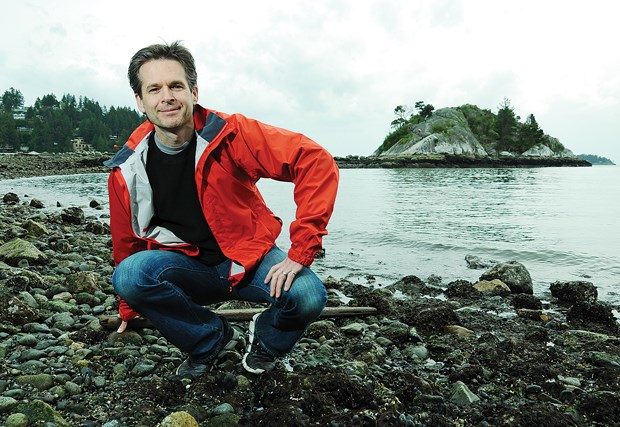A North Vancouver scuba diver has partnered with a world-renowned nonprofit scientific institute to get waters off West Vancouver's Whytecliff Park tested for signs of radiation from 2011's Fukushima nuclear disaster.
Dave Gagnon, one of a growing number of "citizen scientists" involved in the project, said his lifelong love of the ocean spurred his efforts to get involved.
"As a kid growing up I always wanted to be a marine biologist," said Gagnon, who is an electrical engineer by training.
"I scuba dive over here. Whytecliff Park is a really good training ground."
Over the past month, Gagnon has participated in a project of the U.S.-based Woods Hole Oceanographic Institution by crowdsourcing funds to pay for testing of local seawater. He's hoping to raise more money to pay for future tests as well.
Gagnon said he was impressed with the common sense approach of the project, which has enlisted the help of local citizens to get scientifically credible information on the dispersal of Fukushima radiation.
The project, run by the Center for Marine and Environmental Radioactivity at Woods Hole, gets citizens up and down the west coast of North America to nominate sites, then crowdsource $600 to pay for scientific tests.
Gagnon said since Whytecliff went up on the website, at ourradioactiveocean.org, 10 people donated to pay for the testing. He'll be sent a kit including a five-litre jug for collecting seawater that will be sent back for testing using highly sensitive instruments in a Massachusetts lab.
Several other sites on B.C.'s west coast have also been nominated for crowdsourcing, including one on Bowen Island, and others in Ucluelet, Hot Springs Cove off Tofino and Bella Coola.
Ken Buesseler, a senior scientist at Woods Hole who is running the project, said the equipment he uses can detect very small changes in levels of radioactive isotopes including Cesium 134 and 137. "We see things that other groups don't," he said.
According to Woods Hole models of ocean currents, radiation coming from Fukushima should start to show up on the B.C. coast this year.
As a scientist familiar with radiation, Buesseler doesn't expect to see anything approaching levels that should cause concern. Levels of radiation considered safe in drinking water, for instance, range from 7,400 to 10,000 Bequerels per cubic metre and the Fukushima radiation isn't expected to add anywhere near that - additional radiation levels over 30 Bq/m3 would be surprising, he said.
But Buesseler said it's still important to have the information.
"When you have reactors on oceans, when there's a leak it will get in the ocean. We need the expertise and wherewithal to monitor those effects," he said.
Buesseler said government departments seem to feel because radiation levels are expected to be very low, "why bother?" But in the absence of information, "people are still concerned," he said. "When no one's making measurements, people can say what they want to."
Even prior to Fukushima, background levels of the radioactive isotope Cesium 137 - which has a half-life of 30 years - were still detectable in the Pacific from nuclear weapons testing in the 1950s and 1960s at about 1.8 Bq/m3.
There are also elevated levels in the Baltic Sea (measuring about 40 Bq/m3) from the 1986 Chernobyl nuclear disaster. The Irish Sea has background levels of 61 Bq/m3 due to radioactive releases from the Sellafield nuclear processing plant. "It doesn't mean it's good that they're higher," he said. "But people there still eat the seafood. People still swim."
The relative risk is based on how much radiation is absorbed and over what period of time, said Buesseler.
"The risk is never zero." For Gagnon, cutting through the "scientific mumbo jumbo" available on many websites and getting credible information is part of why he'd like to keep raising money for testing sites on the B.C. coast.
"It makes me feel like it's something I should bring to other people's attention," he said.



